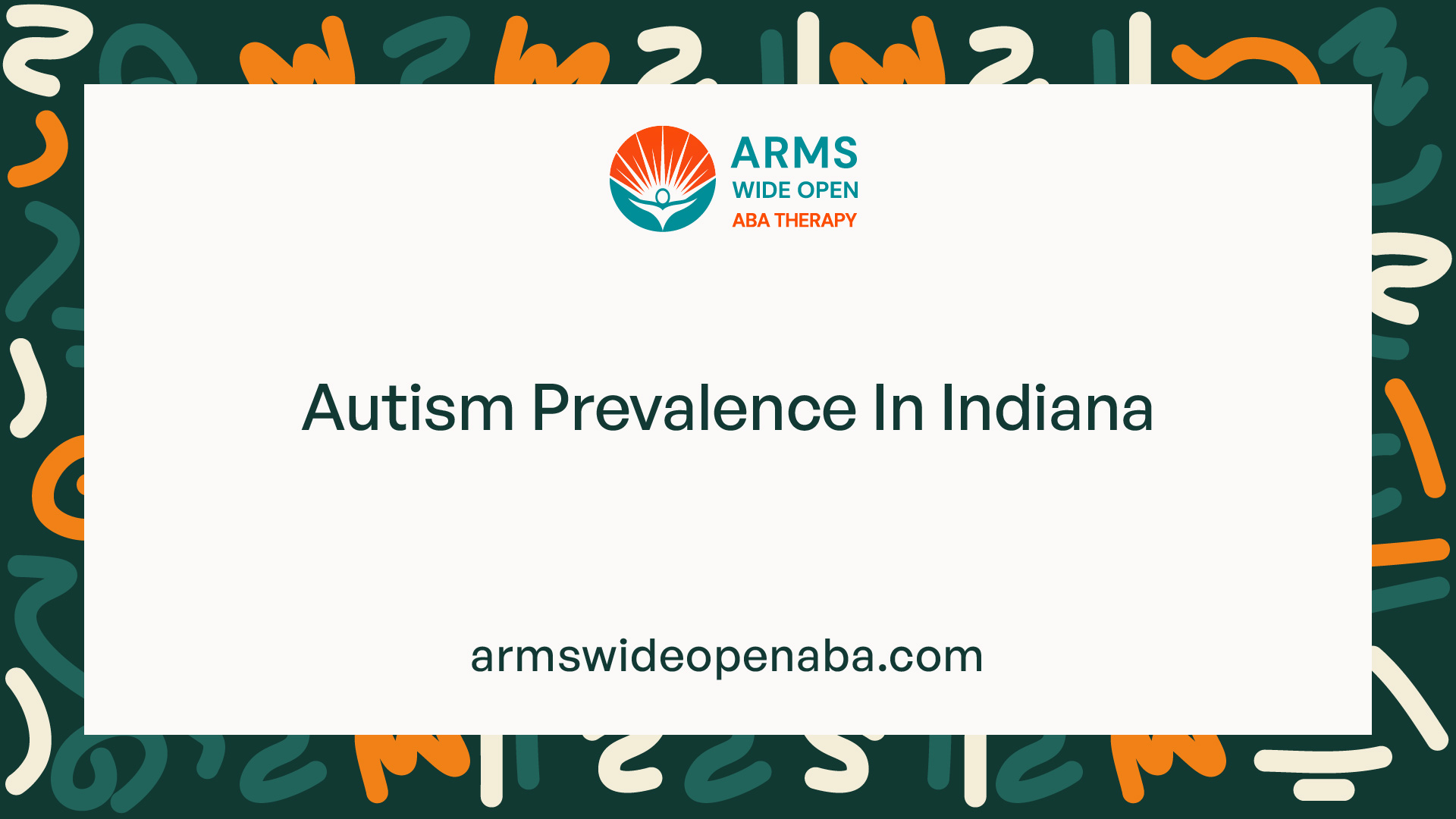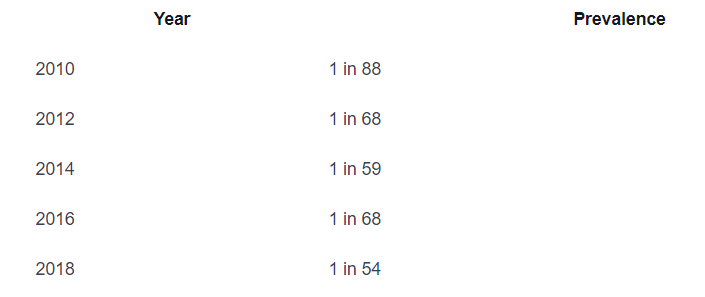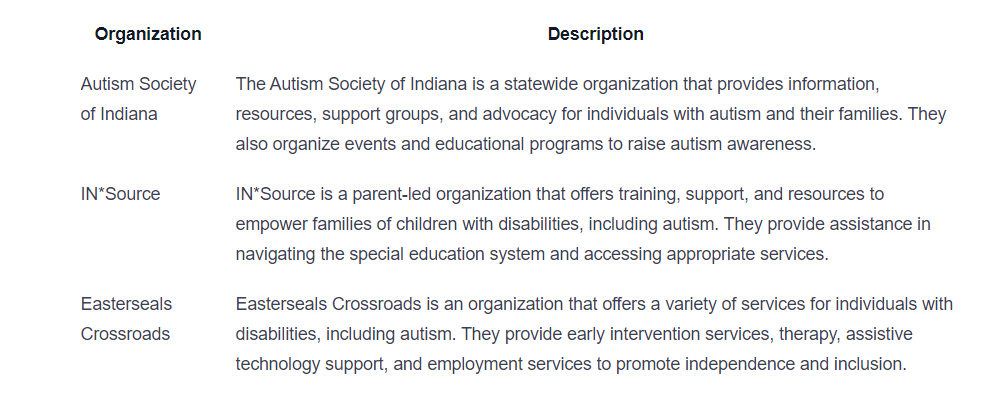Autism Prevalence In Indiana
Unveiling the truth: Autism prevalence in Indiana. Discover current statistics, influential factors, and future implications

Understanding Autism Prevalence
In order to examine the prevalence of autism in Indiana, it is important to first understand what autism spectrum disorder (ASD) is and recognize the significance of studying its prevalence.

Defining Autism Spectrum Disorder
Autism spectrum disorder is a developmental disorder that affects communication, social interaction, and behavior. It is characterized by a wide range of symptoms and can vary in severity from person to person. Individuals with autism may face challenges in areas such as social skills, sensory processing, and repetitive behaviors. It is important to note that autism is a spectrum, meaning that individuals can exhibit a diverse range of abilities and challenges.
Importance of Studying Autism Prevalence
Studying the prevalence of autism is crucial for several reasons. First and foremost, it provides insights into the number of individuals affected by autism in a given population. This information is vital for policymakers, healthcare providers, educators, and researchers to allocate resources, plan interventions, and develop support services tailored to the needs of individuals with autism.
Additionally, studying autism prevalence can help identify trends and patterns over time. Recognizing changes in prevalence rates can guide further research into potential factors contributing to the rise or decline in autism cases. This knowledge can then inform efforts to enhance early detection, intervention strategies, and public health initiatives.
By understanding the definition of autism spectrum disorder and recognizing the significance of studying its prevalence, we can lay the foundation for further examination of autism prevalence in Indiana. In the following sections, we will delve into the research methodology, current statistics, factors influencing prevalence, and future implications of autism in Indiana.
Research Methodology
To examine the prevalence of autism in Indiana, a comprehensive research methodology was employed. This section provides an overview of the data collection process and the subsequent analysis of findings.
Data Collection Process
The data collection process involved gathering information from various sources to obtain a comprehensive understanding of autism prevalence in Indiana. The following steps were taken:
- Identification of Data Sources: Relevant data sources, such as government reports, research studies, and healthcare databases, were identified to ensure the availability of accurate and reliable information.
- Inclusion Criteria: Specific inclusion criteria were established to determine which studies and reports would be included in the analysis. These criteria may have included factors such as sample size, age range, and diagnostic criteria.
- Data Extraction: Data from selected sources were carefully extracted and organized to ensure consistency and accuracy. This step involved recording key information such as the number of autism cases, demographic details, and time period covered.
- Data Compilation: The extracted data were compiled into a comprehensive database, allowing for easy access and analysis. This database served as the foundation for examining autism prevalence in Indiana.
Analysis of Findings
The analysis of findings involved a thorough examination of the compiled data to gain insights into autism prevalence in Indiana. The following steps were undertaken:
- Data Cleaning: The compiled data underwent a rigorous cleaning process to eliminate any inconsistencies, errors, or outliers. This step ensured the accuracy and reliability of the findings.
- Descriptive Analysis: Descriptive statistical analysis techniques were applied to the cleaned data to obtain summary measures such as mean, median, and standard deviation. These measures provided a snapshot of the prevalence of autism in Indiana.
- Trends Analysis: Over time, the prevalence of autism may change. Therefore, trends analysis was conducted to identify any notable patterns or changes in autism prevalence in Indiana. This analysis involved examining data from different time periods and comparing the prevalence rates.
- Interpretation and Implications: The findings were interpreted in light of existing research and knowledge about autism spectrum disorder. The implications of the findings were considered in terms of the impact on individuals with autism, their families, and the broader community.
The research methodology employed for examining autism prevalence in Indiana ensured a systematic and comprehensive approach. By following rigorous data collection and analysis procedures, the findings provide valuable insights into the prevalence of autism in the state.
Autism Prevalence in Indiana
Understanding the prevalence of autism in a specific region can provide valuable insights into the scope and impact of the disorder. In the case of Indiana, it is essential to examine the current statistics and trends over time to gain a comprehensive understanding of autism prevalence in the state.
Current Statistics
The prevalence of autism spectrum disorder (ASD) in Indiana has been on the rise in recent years. The Centers for Disease Control and Prevention (CDC) conducts regular monitoring of autism prevalence in the United States, including Indiana. The most recent data indicates that approximately 1 in 54 children in Indiana have been diagnosed with ASD[^1^].
To further understand the current prevalence, let's take a look at the breakdown by gender:

It is noteworthy that ASD is more commonly diagnosed in males than females, with a higher prevalence among boys compared to girls[^1^].
Trends Over Time
Analyzing trends over time provides valuable insights into the changing landscape of autism prevalence in Indiana. By comparing data from different years, we can identify patterns and potentially uncover factors influencing the rise in prevalence.
The following table displays the prevalence of ASD in Indiana over the past decade:

From this data, it is evident that the prevalence of ASD in Indiana has been steadily increasing over the years. This rise could be attributed to a combination of factors, including improved awareness, better diagnostic practices, and increased access to early intervention services.
It is important to note that these statistics provide a snapshot of autism prevalence in Indiana. Further research and analysis are necessary to delve deeper into the underlying causes and implications of these trends.
Understanding the current statistics and trends in autism prevalence in Indiana is crucial for policymakers, healthcare professionals, educators, and families. By recognizing the scope of the disorder and its impact on individuals and communities, we can work towards providing the necessary support and resources to enhance the lives of individuals with autism in Indiana.
[^1^]: Centers for Disease Control and Prevention (CDC). Prevalence of Autism Spectrum Disorder Among Children Aged 8 Years — Autism and Developmental Disabilities Monitoring Network, 11 Sites, United States, 2016. MMWR Surveillance Summaries 2020;69(4):1–12.
Factors Influencing Prevalence
When examining the prevalence of autism spectrum disorder (ASD), it is important to consider the various factors that may contribute to its occurrence. These factors can be broadly categorized into environmental and genetic influences.
Environmental Factors
Environmental factors refer to external factors that individuals may be exposed to during critical periods of development. While research is ongoing, certain environmental factors have been suggested as potential contributors to the prevalence of autism.
Environmental Factors
Prenatal exposure to certain medications or substances
Maternal infections during pregnancy
Complications during pregnancy or birth
Exposure to air pollution or toxins
It is important to note that these environmental factors may not directly cause autism, but rather interact with genetic factors and contribute to an increased risk. Further research is needed to fully understand the relationship between these factors and autism prevalence.
Genetic Factors
Genetic factors play a significant role in the development of autism. Studies have shown that individuals with certain genetic variations are more likely to be diagnosed with ASD. However, it is essential to understand that these genetic factors do not solely determine the occurrence of autism.
Genetic Factors
Gene mutations or variations
Family history of autism
Advanced parental age
While genetic factors are important, they do not fully explain the increasing prevalence of autism. The interplay between genetic and environmental factors is believed to be complex and multifaceted. Ongoing research aims to further unravel the intricate relationship between these factors and autism prevalence.
By considering both environmental and genetic factors, researchers can gain valuable insights into the prevalence of autism. Understanding these influences can contribute to the development of effective interventions, support systems, and strategies to address the needs of individuals with autism and their families.
Support and Resources
When it comes to autism, having access to appropriate support and resources is essential for individuals and families. In Indiana, several services and community organizations are dedicated to providing assistance and promoting a supportive environment for individuals with autism spectrum disorder (ASD).
Services Available in Indiana
Indiana offers a range of services to support individuals with autism and their families. These services aim to enhance the quality of life and provide necessary support throughout the different stages of life. Here are some key services available:

Community Organizations
In addition to formal services, Indiana is home to several community organizations that play a vital role in supporting individuals with autism and their families. These organizations offer a wide range of resources, advocacy, and networking opportunities. Here are a few notable community organizations in Indiana:

These organizations, along with many others, contribute to creating a supportive network for individuals with autism and their families in Indiana. They provide valuable resources, education, advocacy, and a sense of community, helping to address the unique needs of individuals with autism.
By utilizing the available services and connecting with community organizations, individuals with autism and their families can access the support they need to navigate challenges, enhance their well-being, and thrive in all aspects of life.
Future Implications
As we continue to gain a deeper understanding of autism prevalence in Indiana, it is crucial to consider the future implications of this research. Addressing the needs of individuals with autism and promoting awareness and acceptance are two key areas that require attention and action.
Addressing the Needs of Individuals with Autism
Providing comprehensive support and services to individuals with autism is essential for their overall well-being and quality of life. By addressing their unique needs, we can help create an inclusive environment that allows them to thrive. Some key areas to focus on include:
- Education: Ensuring that individuals with autism have access to appropriate educational opportunities that support their learning and development. This may involve specialized programs, training for educators, and individualized education plans.
- Healthcare: Enhancing healthcare services to cater to the specific needs of individuals with autism. This includes improving access to diagnostic evaluations, therapies, and mental health services.
- Employment: Creating employment opportunities and supportive workplaces that recognize and accommodate the strengths and abilities of individuals with autism. This can be achieved through vocational training programs, job coaching, and workplace accommodations.
- Social Support: Establishing social support networks that promote inclusion and provide opportunities for individuals with autism to engage in recreational activities, socialize, and build meaningful relationships.
By prioritizing these aspects, we can work towards creating a more inclusive and supportive society for individuals with autism in Indiana.
Promoting Awareness and Acceptance
Raising awareness about autism and fostering acceptance within the community is crucial in creating a more inclusive society. This can be achieved through various initiatives, such as:
- Education and Outreach: Conducting educational campaigns to increase awareness and understanding of autism among the general public, schools, healthcare providers, and other relevant stakeholders. This can help dispel misconceptions and stereotypes associated with autism.
- Community Engagement: Encouraging community involvement and collaboration by organizing events, workshops, and support groups that bring together individuals with autism, their families, and the broader community. These platforms provide opportunities for interaction, empathy, and understanding.
- Advocacy: Supporting advocacy efforts to influence policies and practices that promote the rights and well-being of individuals with autism. This involves engaging with policymakers, legislators, and other influential individuals to drive positive change.
- Media Representation: Encouraging accurate and positive portrayal of individuals with autism in media, including television, movies, and literature. This can help challenge stereotypes and promote acceptance.
By promoting awareness and acceptance, we can create a more inclusive society that embraces and supports individuals with autism in Indiana and beyond.
As we move forward, it is crucial to prioritize the needs of individuals with autism and work towards creating a society that values and respects their unique strengths and challenges. By addressing these future implications, we can make significant progress in creating a more inclusive and supportive environment for individuals with autism in Indiana.
Sources
https://www.goldenstepsaba.com/resources/autism-prevalence-indiana
https://iidc.indiana.edu/irca/articles/prevalence-of-autism-spectrum-disorders-in-indiana.html
https://www.crossrivertherapy.com/autism/autism-prevalence-in-indiana
Similar articles
We’re here to help you

Our team is here to assist you in this process. Contact us for any assistance.
it’s easy to apply
We Accept Most Insurances
Our in-network insurance partnerships make ABA therapy more accessible to families throughout our service areas.







Our Insurance Process
We'll request your insurance details to help us verify your plan's coverage for ABA therapy. Once we've received this information, we'll walk you through your benefits, including copayments, deductibles and out-of-pocket maximums, so you know what to expect in advance.
Our team will then handle the preauthorization and all the necessary paperwork.
.svg)





















.jpeg)


































.jpeg)




.jpeg)







.jpeg)











.jpeg)
















